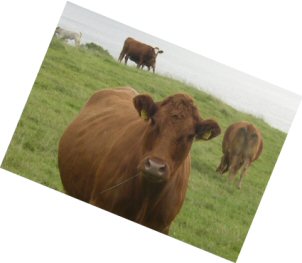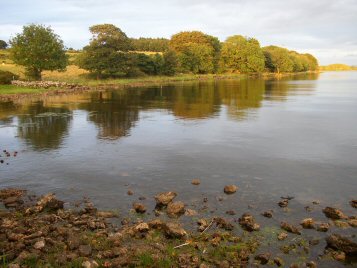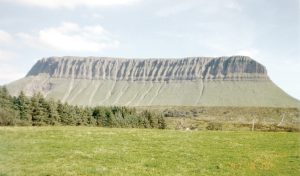

 |
 |
 |
 |
Fernlea
is situated in countryside townland of Kiltycahill, just outside the County
Town of Sligo. It consists of three large fields that run down to the
beautiful, enigmatic Lough Gill and faces the wonderous mountains of Slieve
Deane. On one side is the Hazelwood Demense, Half Moon Bay and the ancient
area of Annagh Point. Whilst on the other side the Lough runs the neighbouring
county of Leitrim. These are just some of the wonderful sights,
|
 |
 |
views
and history that Sligo County has to offer, truly a magnificent gem
of Ireland.
|
 |
|
Our Home Alongside Picturesque Lough Gill |
(All the above photos taken from our back garden) * Click on photos below for more details on the subjects |
||||||
|
A picturesque lough in which the lake isle of Innisfree is located, made famous by W.B. Yeats who wrote the poem feeling homesick for Ireland and imagined the sound of the water at Innisfree. Also on the banks of Lough Gill from Dooney Rock you can see all of the lough. Lough Gill (or Loch Gile in Irish) is a lake mainly situated in County Sligo, but partly in County Leitrim, in the Republic of Ireland. It is about 8 km (5 miles) long and 2 km (1 mile) wide and drains into the River Garavogue near Sligo Town. The picturesque lake is surrounded by wooded hills and is popular with birdwatchers. It is overlooked by the fortified manor house, Parke's Castle. The present castle was built in the 1600s by Captain Robert Parke on the site of the former stronghold of the O'Rourke (Uí Ruairc) clan. The Uí Ruairc's ruled the area from about the 7th century (they were descended from Sean Ferghal O Ruairc, King of Connacht around 952) up to the time of Oliver Cromwell. The lake contains about 20 small islands, including the romantic Lake Isle of Innisfree made famous in a poem by William Butler Yeats.
County Sligo's beautiful scenery was an inspiration for Yeats, who is buried at Drumcliffe Churchyard, under loaf-shaped Benbulben Mountain. The lakes of Sligo, with their still waters and wooded islands, are truly spectacular, and form a striking contrast to the county's rugged uplands. The imposing Neolithic cairn on the summit of Knocknarae, known locally as Queen Maeve's grave, is a striking landmark. At Carrowmore, you'll find the largest Megalithic cemetery in Ireland. (More) Sligo Town, County Sligo Known affectionately as the Yeat's Country, County Sligo lies in the Connacht province in the west of Republic of Ireland. The countryside of Sligo offers mountains, beaches and lakes. The capital of County Sligo is an attractive town with good bars and restaurants, theatres, art galleries and delicatessens. Sligo is the largest town in the north-west, with a heritage going back 6,000 years. Its name literally translates as 'the place of shells' - the town's prehistoric residents had a huge appetite for shellfish, and the remains of the unfortunate crustaceans can be found buried all over the area. Sligo town makes a good base for a range of activities - horse riding, golfing, walking, cycling, fishing and water sports are all very popular. |
|
 |
Ireland's most distinctive mountain and known in some parts as Ireland's version of Table Mountain. It is the result from the different responses to erosion of the limestone and shale of which the mountain is formed. A hard and resistant limestone forms the upper cliffs and precipices. Many legends and tales have been woven round the almost magical mountain that is Benbulben. Mysterious shady valleys dominate the landscape in this upland alpine-like region. You can easily see how this brooding mountain, which rises so steeply from the ground below, could conjure up tales of enchanted maidens, warriors and spells. This beautiful Irish and Sligo landmark can be seen from the rear of our fields and is truly magnificent in its splendour. |
 |
